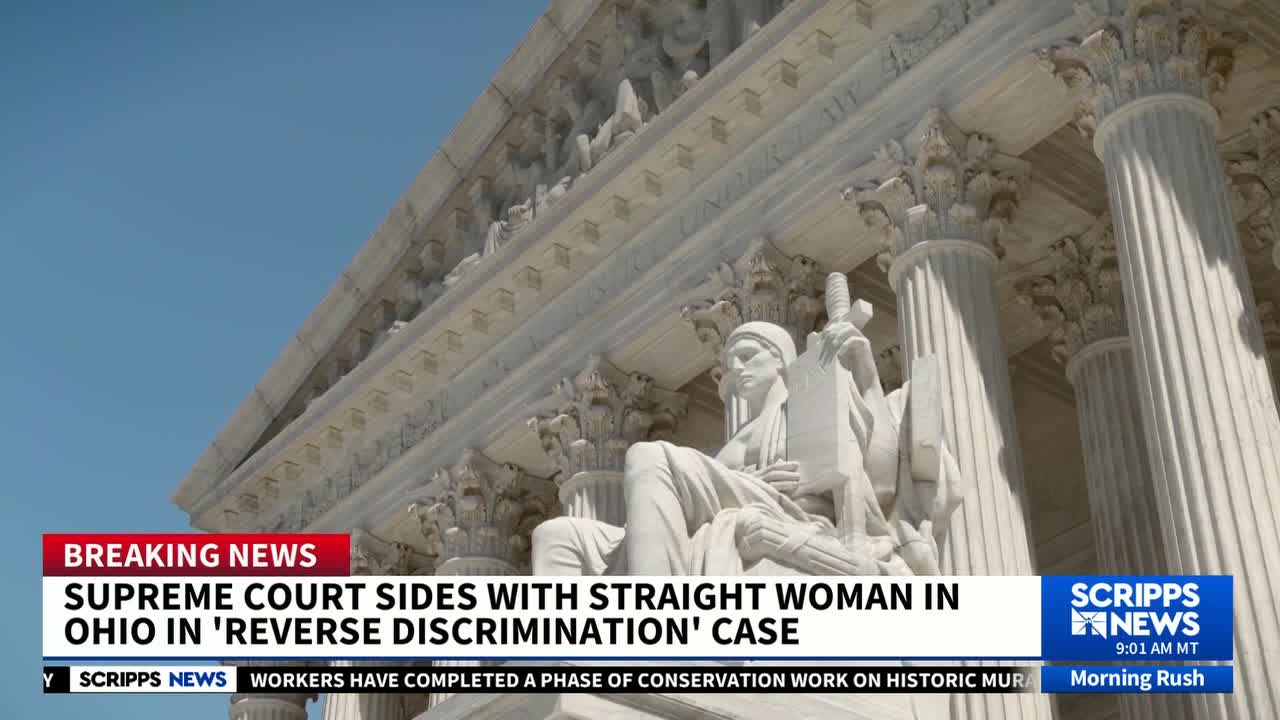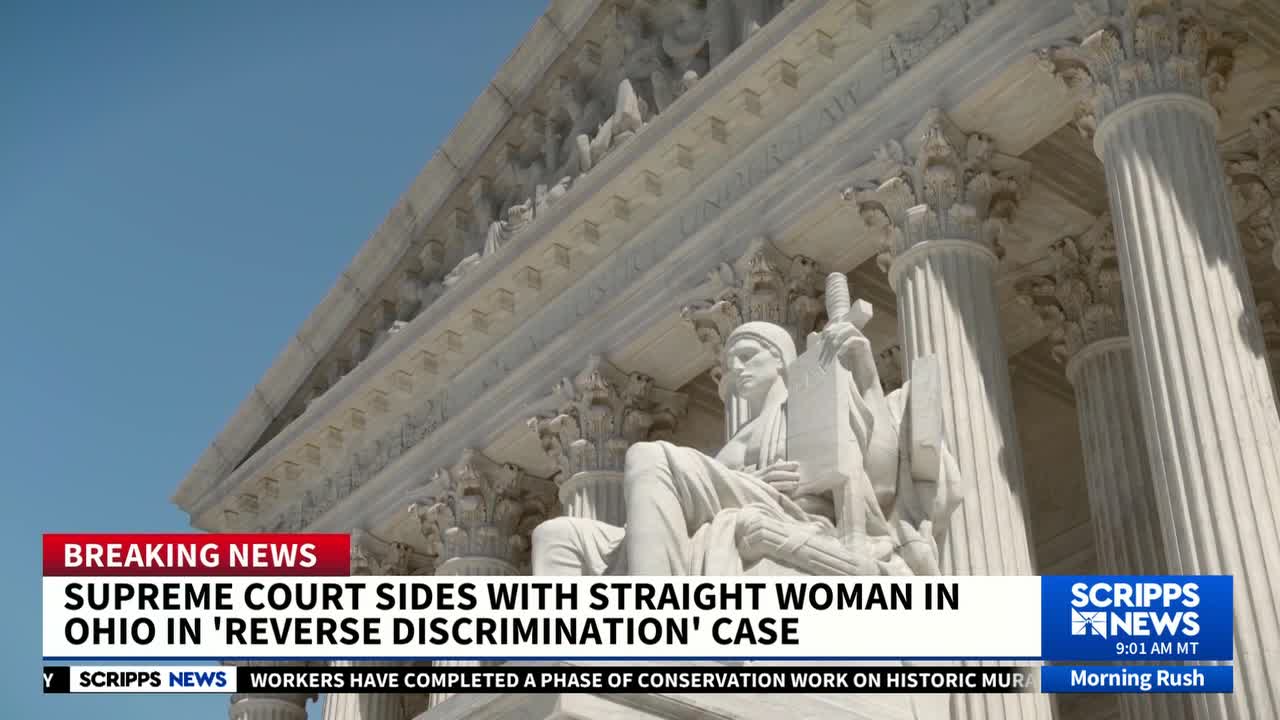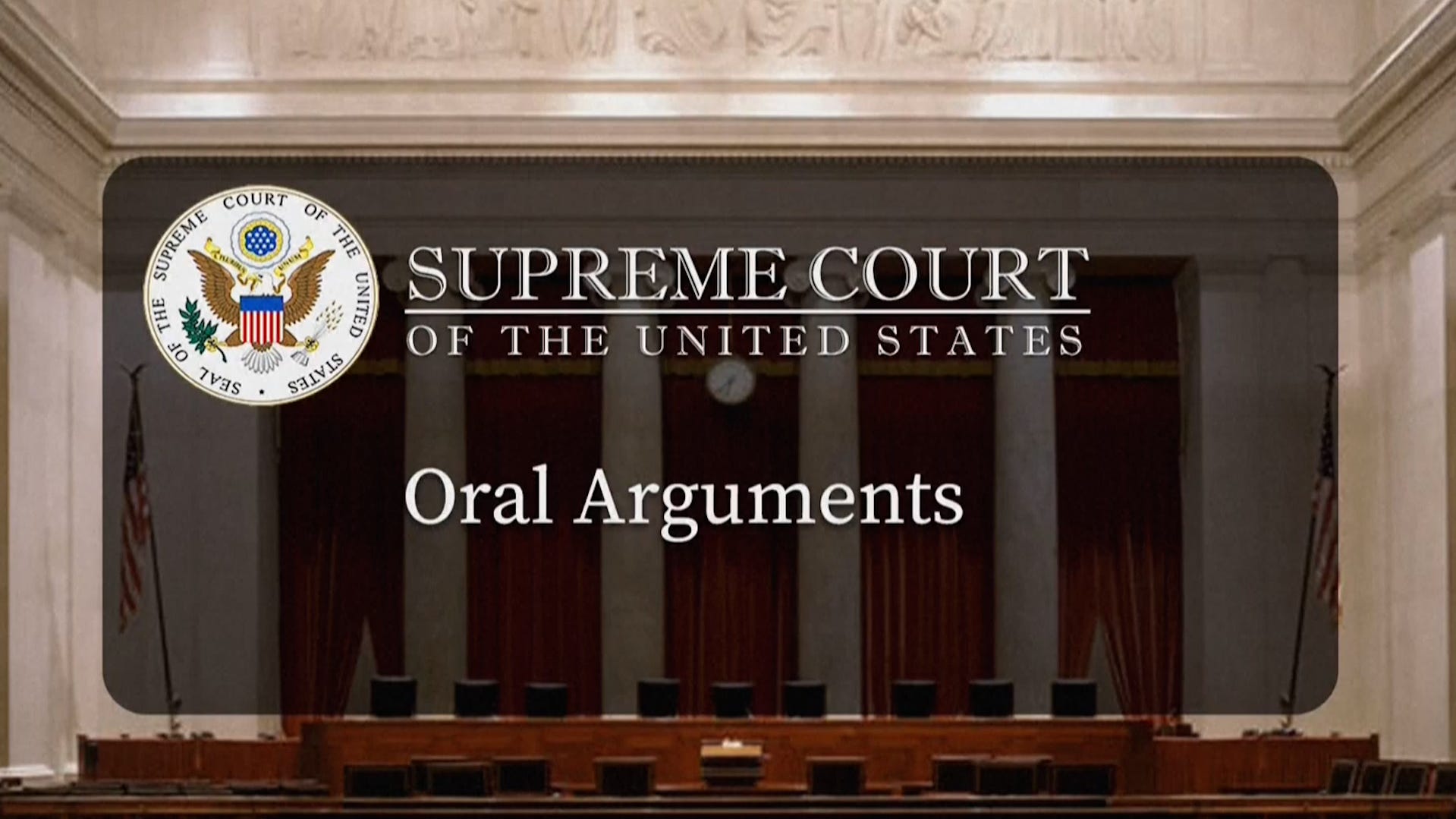
The court said members of a majority group don’t face an extra hurdle when alleging ‘reverse discrimination’ in the workplace.

Supreme Court sides with straight woman in ‘reverse discrimination’ case
The Supreme Court made a unanimous decision after siding with a woman who claims she didn’t get a job and then was demoted because she is straight.
Scripps News
WASHINGTON – The Supreme Court agreed on June 5 that a worker faced a higher hurdle to sue her employer as a straight woman than if she’d been gay.
The unanimous decision, which landed amid a national backlash against diversity, equity and inclusion programscould trigger a wave of “reverse discrimination” lawsuits.
The justices rejected a lower court’s ruling that Marlean Ames could not sue the Ohio Department of Youth Services because she’d failed to provide “background circumstances” showing the department was “that unusual employer who discriminates against the majority.”
That’s a test created in 1981 by a federal appeals court used by many, but not most, of the federal courts when assessing claims brought under Title VII of the Civil Rights Act of 1964. The U.S. Court of Appeals for the D.C. Circuit said in 1981 that while white people are covered by the Civil Rights Act, it defied common sense “to suggest that the promotion of a black employee justifies an inference of prejudice against white co-workers in our present society.”
But the law itself, which bans discrimination based on “race, color, religion, sex or national origin,” doesn’t set different thresholds for members of minority and majority groups.

SCOTUS ruling on ‘reverse discrimination’ civil rights case
The Supreme Court justices questioned whether an extra hurdle for people of “majority backgrounds” is required to prove discrimination.
The Supreme Court said the “background circumstances rule” can’t be squared with the text of the law or the court’s previous rulings.
“And nothing Ohio has said, in its brief or at oral argument, persuades us otherwise,” Justice Ketanji Brown Jackson wrote for the court.
What the Trump administration means for your identity: Sign up for USA TODAY’s This is America newsletter.
Ames’ lawyers told the justices her suit would not have been dismissed at this stage of the litigation had she been gay and the employees who got the jobs she wanted were straight.
“We are overjoyed that the court saw the case our way,” Edward Gilbert, an attorney for Ames, said after Thursday’s ruling.
During the court’s discussion of the case in February, Ohio’s solicitor general did not defend the “exact language” the Cincinnati-based 6thU.S. Circuit Court of Appealsused when rejecting Ames’ suit over insufficient “background circumstances.” But T. Elliot Gaiser, the solicitor general, argued that Ames still failed to show enough evidence that her sexual orientation played any role in the hiring decisions she questioned.
Ames twice lost jobs at the Ohio Department of Youth Services to other candidates she thought were less qualified, both of whom were gay.
The department said she was passed over for a promotion because she lacked the necessary vision and leadership skills, not because she happened to be straight.
Officials said she was then demoted from her administrator position because she wouldn’t bring a proactive approach to the department’s increased emphasis on combatting sexual violence in the juvenile corrections system.
The Supreme Court’s decision in Amex v. Ohio Department of Youth Services doesn’t settle Ames’ discrimination claim but only revives it for additional court proceedings.
Dominic Binkley, spokesperson for the Ohio attorney general’s office, said the state will continue to make its case that the department did not discriminate against Ames.
Evan Parness, an expert on employment law at Covington & Burling, said more “reverse discrimination” lawsuits may now clear an initial hurdle. But employers can still stop the suit from proceeding to trial by demonstrating that the disputed act was made for legitimate, non-discriminatory reasons.
Contributing: Reuters
(This story was updated to include new video.)



